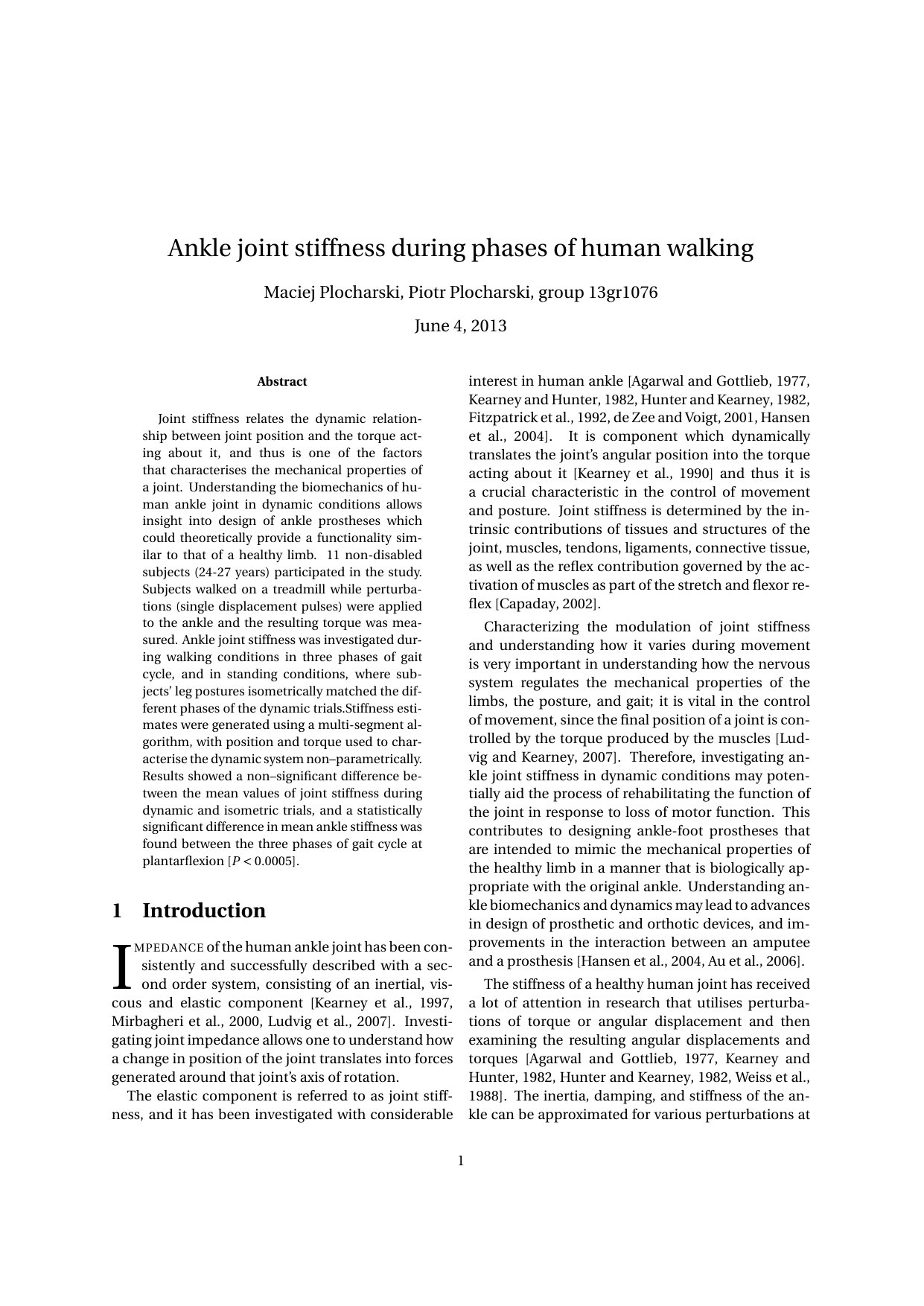
Ankle joint stiffness during phases of human walking.
Translated title
Ankelledstivhed i faser af gangcyklussen.
Authors
Term
4. term
Publication year
2013
Submitted on
2013-06-04
Pages
90
Abstract
Forståelse og fortolkning af biomekanikken i menneskets ankelled under dynamiske forhold giver et indsigt i hvordan kunne designet af ankelproteser udvikles til det punkt, hvor funktionaliteten af det sunde ankel genskabes helt. Stivhed er én af de faktorer, der karakteriserer de mekaniske egenskaber af et led, da det formidler den dynamiske forhold mellem leddetsposition og momentet omkring leddet. 11 unge, sunde forsøgspersoner (24–27 år) deltog i studiet. Forsøgspersonerne gik på et løbebånd, mens perturbationer (enkle forskydnings pulser) var påført ankleleddet og det resulterende moment var målt. Ankelstivhed blev forsket under gående forhold i tre faser af gangcyklussen, og under stående forhold, hvor forsøgspersonernes ben positur matchede de tre faser under dynamiske forsøg. Stivhedsestimater blev genereret ved hjælp af en multi–segment algoritme, hvor position– og momentdata blev brugt til at karakterisere det dynamiske system non–parametrisk. Resultater viste et statistisk ikke signifikant forskel mellemmiddleværdier for stivhed under dynamiske og statiske forsøg, samt en statistisk signifikant forskel mellem stivhed middleværdierne under plantarflexion perturbationer i de tre faser af gangcyklus [P < 0.0005].
Understanding the biomechanics of human ankle joint in dynamic conditions allows insight into design of ankle prostheses which could theoretically provide a functionality similar to that of a healthy limb. Joint stiffness is one of the factors that characterises the mechanical properties of a joint, as it relates the dynamic relationship between joint position and the torque acting about it. 11 young non-disabled subjects (24-27 years) participated in the study. Subjects walked on a treadmill while perturbations (single displacement pulses) were applied to the ankle and the resulting torque was measured. Ankle joint stiffness was investigated during walking conditions in three phases of gait cycle, and in standing conditions, where subjects’ leg postures isometrically matched the different phases of the dynamic trials. Stiffness estimates were generated using amulti-segment algorithm, with position and torque used to characterise the dynamic system non–parametrically. Results showed a non–significant difference between the mean values of joint stiffness during dynamic and isometric trials, and a statistically significant difference in mean ankle stiffness was found between the three phases of gait cycle at plantarflexion [P < 0.0005].
Keywords
Documents
